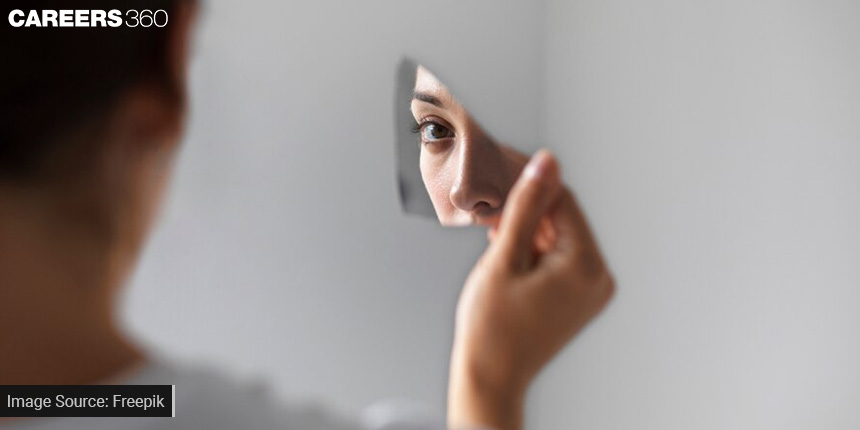Science Of Reflection: Why Do We See Ourselves in Mirrors?
Mirrors are those unassuming everyday companions that provide a personal connection to our reflections. Whether it's the bathroom mirror or the pocket-sized compact mirror, they act as our windows into self-perception. But have you ever paused to contemplate the science and wonder behind why we see ourselves in mirrors?

In this article, we peel back the layers of this everyday mystery, uncovering the principles of mirror reflection and the remarkable way our brains interpret what they reflect. As we journey through the world of mirrors, you'll discover the fascinating interplay of light, glass, and the human mind that makes our reflection possible, leaving you with a newfound sense of wonder about this ordinary yet extraordinary experience.
The Basics of Mirror Reflection
Mirrors operate on the basic principle of reflection. When light, such as light from a room or the sun, strikes the surface of a mirror, it bounces off rather than passing through it. This is referred to as "reflection." The crucial concept here is that the angle at which light strikes the mirror's surface equals the angle at which it bounces off, according to a physical phenomenon known as the "law of reflection." The light from our faces bounces off the mirror and reaches our eyes, which is why we can see our own image in a mirror.
Also Read | Understanding Density Stratification: Why Does Oil Float On Water?
Types of Mirrors and Their Unique Properties
Flat Mirrors: These are the mirrors that you might find on the wall of your bathroom or in a dressing room. They generate images that are the same size as the thing without distorting proportions.
Concave Mirrors: Concave mirrors bend inward and are commonly seen in telescopes, spotlights, and makeup mirrors. Depending on the position of the object, they can generate both actual and virtual images.
Convex Mirrors: Convex mirrors bend outward and are typically found in rear-view mirrors. They generate smaller, virtual pictures to assist drivers in seeing a larger field of view.
Formation of Mirrored Images
When you look into a mirror, the image you see isn't a real object but a "virtual" image. This means it seems like the image is behind the mirror, but there's no actual object there. The mirror reflects light in a way that tricks your brain into thinking there's something on the other side, even though there isn't.
Mirrored images are unique in that they are not only virtual, but also reversed and laterally inverted. "Reversed" indicates that in the mirror, your right side appears on the left and your left side appears on the right. "Laterally inverted" indicates that in the mirror, objects on the left side of your face, for example, appear on the right side. It's like seeing a mirror image of yourself.
Our eyes take in the reflected light from the mirror, which our brain analyses. It is our brain that turns the picture we see in the mirror into our familiar self. So, even if the image appears to be reversed, our brain immediately corrects it so we can grasp what we're looking at.
Also Read | Exploring Energy Storage: Batteries, Capacitors and Beyond For A Greener World
Our Brain's Role in Perception
Your brain is an expert interpreter, transforming the mirrored image into the recognisable "you." The brain processes the information that enters your eyes as light reflects off the mirror. It deciphers the reversed and laterally inverted image and shows it as your natural self in a fraction of a second. Mirrors would seem baffling without this extraordinary cognitive skill, requiring frequent mental acrobatics to comprehend.
Your brain's rapid adaptability is the key to your capacity to recognise your mirrored self. Despite the fact that the image is reversed and laterally inverted, your brain quickly makes the required adjustments to ensure that you see it as your real self. This intrinsic ability demonstrates the brain's incredible capacity to adapt and make the environment more understandable.
So, the next time you look in the mirror, go ahead and admire yourself, but also take a moment to admire the delicate dance of light, glass, and your brain's incredible talents that combine to represent your genuine self. The science and awe behind this everyday experience testify to the amazing interplay of nature and cognition that surrounds us, making even the most mundane reflections a source of endless intrigue.
Applications for Admissions are open.
As per latest syllabus. Physics formulas, equations, & laws of class 11 & 12th chapters
JEE Main Important Chemistry formulas
Get nowAs per latest syllabus. Chemistry formulas, equations, & laws of class 11 & 12th chapters
JEE Main high scoring chapters and topics
Get nowAs per latest 2024 syllabus. Study 40% syllabus and score upto 100% marks in JEE
JEE Main Important Mathematics Formulas
Get nowAs per latest syllabus. Maths formulas, equations, & theorems of class 11 & 12th chapters
